Carbamazepine Tablets: A Trusted Ally in Neurological Care
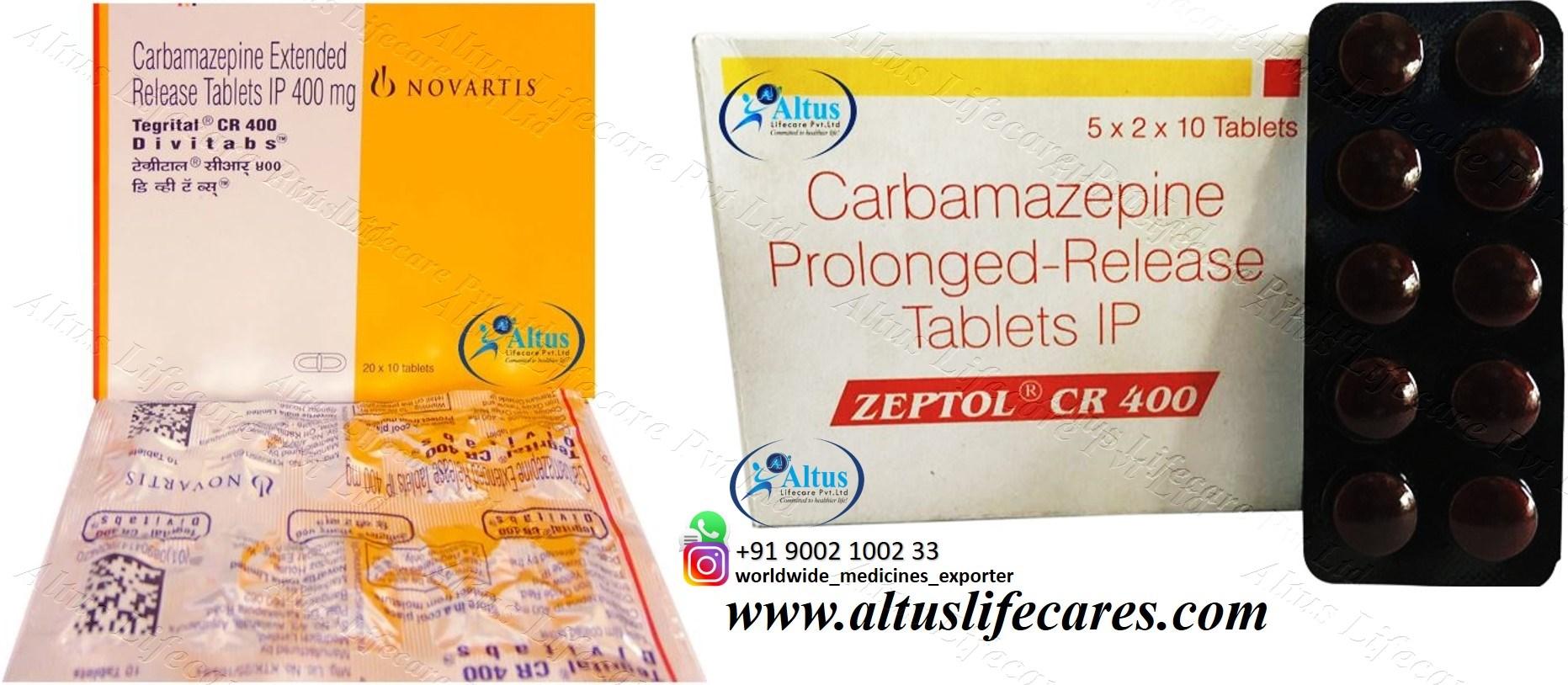
Carbamazepine Tablets: End Nerve Chaos, Embrace Calm
Quick Introductory Summary
Carbamazepine Tablets have earned a respected place in the pharmacological world, especially in the field of neurology. Known for their powerful anticonvulsant and mood-stabilizing properties, these tablets are extensively used in the treatment of epilepsy, trigeminal neuralgia, and bipolar disorder. With a long history of clinical success and robust scientific backing, Carbamazepine remains a gold standard for several chronic neurological conditions.
This blog explores the ins and outs of Carbamazepine Tablets in a highly detailed and optimistic tone. From its mechanism of action to clinical applications and safety profile, we delve deep into every aspect of this essential medication. Whether you're a healthcare provider, pharmacist, or patient, this comprehensive review aims to provide clarity, reassurance, and appreciation for this remarkable pharmaceutical product.
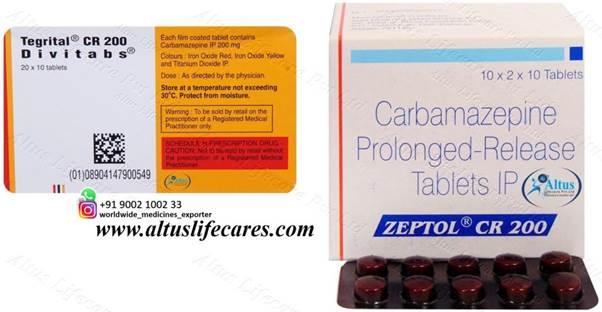
Table of Contents
- Introduction
- What Are Carbamazepine Tablets?
- Mechanism of Action: How Carbamazepine Works
- Indications and Medical Uses
- Dosage and Administration Guidelines
- Pharmacokinetics: Absorption, Distribution, Metabolism & Excretion
- Efficacy in Clinical Practice
- Side Effects and Safety Profile
- Drug Interactions: What to Watch For
- Contraindications and Precautions
- Patient Compliance and Convenience
- Comparative Analysis with Other Anticonvulsants
- Special Populations: Use in Children, Elderly & Pregnant Women
- Storage, Handling, and Packaging
- Real-World Experiences and Patient Testimonials
- Conclusion: Elevating Lives with Every Dose
- Frequently Asked Questions (FAQ)
1. Introduction Carbamazepine Tablets
Carbamazepine Tablets are one of the most widely used anticonvulsants in the world. Since their introduction, these tablets have continually proven their effectiveness in managing a range of neurological and psychiatric disorders. Backed by decades of clinical use, Carbamazepine remains a mainstay in medical practice due to its dependable therapeutic benefits and predictable pharmacological profile.
Its versatility, affordability, and broad-spectrum utility make it not just a treatment option—but often the first choice—for managing chronic conditions such as epilepsy, neuropathic pain, and mood disorders. The robust evidence supporting its efficacy, along with widespread physician trust, places Carbamazepine at the forefront of modern neurological therapy.
2. What Are Carbamazepine Tablets?
Carbamazepine Tablets are oral pharmaceutical preparations containing Carbamazepine, a dibenzazepine derivative with anticonvulsant, mood-stabilizing, and analgesic properties. Typically available in strengths such as 100 mg, 200 mg, and 400 mg, these tablets are designed for long-term use and come in immediate-release or controlled-release formulations.
Carbamazepine is classified as a sodium channel blocker that reduces excessive electrical activity in the brain. While its primary role is to manage seizures, it is also widely prescribed for trigeminal neuralgia, bipolar disorder, and a growing list of off-label indications.
3. Mechanism of Action: How Carbamazepine Works
Carbamazepine Tablets, a tricyclic compound chemically related to tricyclic antidepressants, operates primarily as an anticonvulsant and mood stabilizer. Its multifaceted mechanism of action makes it uniquely effective in managing neurological and psychiatric disorders. To understand how Carbamazepine works, it's essential to explore its primary molecular targets and their physiological implications.
A. Voltage-Gated Sodium Channel Inhibition
At the core of its antiepileptic action is Carbamazepine's ability to block voltage-gated sodium channels (VGSCs) in neuronal membranes. During an epileptic episode, neurons fire rapidly and uncontrollably, generating excessive electrical activity that spreads across the brain. Carbamazepine binds preferentially to the inactivated state of these sodium channels, prolonging their refractory period.
This action:
- Stabilizes overactive neuronal membranes
- Prevents the generation and spread of abnormal electrical discharges
- Reduces neuronal excitability
As a result, Carbamazepine interrupts the propagation of seizure activity, particularly effective in focal (partial) seizures and secondary generalized seizures.
B. Presynaptic Inhibition of Excitatory Neurotransmitters
Beyond its effects on sodium channels, Carbamazepine Tablets also modulates neurotransmitter release, particularly glutamate, the primary excitatory neurotransmitter in the central nervous system (CNS). By inhibiting excessive glutamate release at synaptic terminals, it dampens hyperexcitability and synaptic transmission that contribute to seizure generation and mood instability.
This function also plays a key role in its analgesic properties, especially in conditions like trigeminal neuralgia, where excessive excitatory signaling contributes to chronic neuropathic pain.
C. Interaction with Calcium Channels and Potassium Currents
Although less pronounced than its sodium channel effects, Carbamazepine may also influence calcium and potassium ion channels, which are crucial in regulating synaptic activity and neuronal firing patterns. Some studies suggest it modulates L-type calcium channels, contributing to mood stabilization and antinociceptive effects.
These additional ion channel effects add a layer of complexity and broaden Carbamazepine’s utility beyond mere seizure control, especially in psychiatric and pain disorders.
D. Role in Mood Stabilization
While the exact mechanism through which Carbamazepine Tablets exerts its mood-stabilizing effects in bipolar disorder is not fully elucidated, several hypotheses exist:
- Serotonergic Modulation: It may increase serotonin turnover, balancing mood and improving affective symptoms.
- GABAergic Activity: Some indirect evidence suggests it enhances GABA (gamma-aminobutyric acid), the brain's major inhibitory neurotransmitter, supporting its calming effect.
- Intracellular Signaling Modulation: Like lithium and valproate, Carbamazepine may alter second messenger systems, including inositol metabolism and protein kinase activity, thereby stabilizing mood over time.
These mechanisms, though still under study, reflect Carbamazepine's complex psychotropic profile, making it an effective treatment for bipolar disorder.
E. Selective Targeting of Pathological Activity
One of the most remarkable features of Carbamazepine is its selective action. It targets hyperactive and rapidly firing neurons while sparing normal neuronal function. This selective targeting helps reduce unwanted sedative effects and cognitive dulling, which are often associated with older antiepileptics.
F. Summary of Mechanistic Benefits
|
Mechanism |
Clinical Benefit |
|
Sodium channel inhibition |
Suppresses seizures, controls neural overactivity |
|
Glutamate modulation |
Reduces excitatory transmission, prevents seizures, relieves neuropathic pain |
|
Calcium channel modulation |
Enhances mood stability and analgesia |
|
GABAergic enhancement (indirect) |
Promotes calming effects and seizure control |
|
Targeting overactive neurons |
Minimizes cognitive side effects, enhances tolerability |
G. Synergistic Use in Polytherapy
Due to its clear and well-defined mechanism, Carbamazepine is often used in combination therapy with other antiepileptics, especially when monotherapy is inadequate. Its ability to complement agents like lamotrigine, levetiracetam, or benzodiazepines without excessive redundancy in action makes it an ideal candidate for personalized treatment regimens.
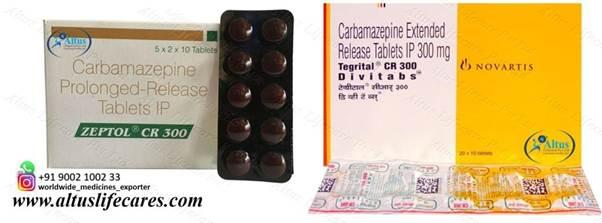
Conclusion
In essence, Carbamazepine's mechanism of action centers on restoring electrical balance in the brain. By targeting sodium channels, modulating neurotransmitter release, and selectively acting on hyperactive neurons, it delivers powerful relief from seizures, pain, and mood swings. This precise and reliable mechanism underpins its enduring success across multiple clinical domains and cements its place as a cornerstone in neuropharmacology.
4. Indications and Medical Uses
Carbamazepine Tablets have a broad range of indications:
A. Epilepsy
Used for partial seizures, generalized tonic-clonic seizures, and mixed seizure patterns.
B. Trigeminal Neuralgia
Considered the first-line treatment for this debilitating facial pain condition.
C. Bipolar Disorder
Especially effective in managing manic episodes and preventing recurrence.
D. Off-label Uses
Includes treatment of diabetic neuropathy, post-herpetic neuralgia, restless legs syndrome, and alcohol withdrawal symptoms.
5. Dosage and Administration Guidelines
Carbamazepine Tablets dosing is highly individualized and based on the condition, patient’s weight, age, and response:
- Adults (Epilepsy): Start with 100–200 mg twice daily, gradually increasing.
- Children: Start with 10–20 mg/kg/day in divided doses.
- Trigeminal Neuralgia: Start with 100 mg twice daily; increase gradually.
- Bipolar Disorder: Maintenance typically ranges between 600–1600 mg/day.
Always follow titration schedules carefully to minimize adverse effects and ensure therapeutic efficacy.
6. Pharmacokinetics: ADME Overview
Absorption:
- Slow but complete absorption from the gastrointestinal tract.
- Peak plasma levels in 4–8 hours (immediate-release).
Distribution:
- Widely distributed in body tissues.
- Crosses the blood-brain barrier efficiently.
Metabolism:
- Extensively metabolized in the liver via CYP3A4.
- Autoinduction of metabolism occurs after prolonged use.
Excretion:
- Mostly eliminated through urine as metabolites.
- Half-life ranges from 12 to 17 hours with chronic dosing.
7. Efficacy in Clinical Practice
Carbamazepine has demonstrated remarkable effectiveness in diverse clinical settings:
- Seizure control rates exceed 70–80% in focal epilepsies.
- In trigeminal neuralgia, pain relief is seen in over 90% of cases.
- In bipolar disorder, it rivals lithium in controlling manic episodes, with fewer side effects in some patients.
Studies have also shown that it enhances quality of life by reducing seizure frequency and stabilizing mood with long-term use.
8. Side Effects and Safety Profile
While generally well-tolerated, some common side effects include:
- Drowsiness, dizziness
- Nausea, vomiting
- Ataxia and unsteadiness
- Rash or allergic reactions
Rare but serious effects (e.g., agranulocytosis, aplastic anemia, Stevens-Johnson syndrome) are monitored via regular blood tests.
With proper titration, most side effects are manageable and transient.
9. Drug Interactions: What to Watch For
Due to its enzyme-inducing properties, Carbamazepine interacts with:
- Oral contraceptives (reduces effectiveness)
- Warfarin (decreases anticoagulant effect)
- Other antiepileptics like phenytoin and valproate
Caution is also advised when used with macrolide antibiotics, grapefruit juice, and SSRIs due to metabolic interference.
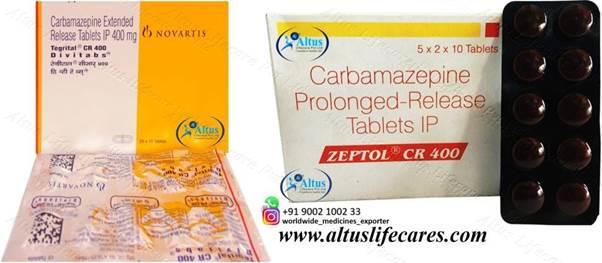
10. Contraindications and Precautions
Contraindicated in:
- History of bone marrow depression
- Hypersensitivity to tricyclic compounds
- Use with MAO inhibitors (14-day washout required)
Caution in patients with hepatic, renal, or cardiac dysfunction.
Routine monitoring of liver function tests, CBCs, and drug levels is recommended.
11. Patient Compliance and Convenience
Available in various formulations—including chewable tablets, oral suspensions, and extended-release forms—Carbamazepine Tablets offers excellent flexibility, promoting adherence in both pediatric and adult patients.
Once-daily formulations help simplify complex regimens, improving compliance for long-term users.
12. Comparative Analysis with Other Anticonvulsants
Compared to phenytoin or valproate:
- Carbamazepine Tablets offers superior control in partial seizures.
- Fewer cosmetic side effects than valproate (e.g., weight gain, hair loss).
- Lower teratogenicity compared to valproate, making it preferable in women of childbearing age (though caution is still needed).
13. Special Populations
Children:
Well-tolerated and effective in pediatric epilepsy and neuropathic pain.
Elderly:
Lower starting doses due to slower metabolism and increased sensitivity.
Pregnancy:
Associated with birth defects; use only if benefits outweigh risks. Folic acid supplementation is advised.
14. Storage, Handling, and Packaging
- Store below 25°C, away from moisture and direct sunlight.
- Child-resistant packaging enhances safety.
- Available in blister packs and HDPE containers for bulk dispensing.
15. Real-World Experiences and Patient Testimonials
Patients often describe Carbamazepine Tablets as life-changing. Many individuals with epilepsy regain independence, resume careers, and live fuller lives. Trigeminal neuralgia sufferers report dramatic pain relief, often calling it a "miracle pill."
Mental health patients with bipolar disorder also express gratitude for its stabilizing effects, allowing them to function effectively in work and social settings.
16. Conclusion: Empowering Neurological Wellness
Carbamazepine Tablets have carved an irreplaceable niche in neurology and psychiatry. Their unmatched reliability in seizure control, pain relief, and mood stabilization highlights their therapeutic versatility. With proven efficacy, broad indications, and a well-studied safety record, Carbamazepine continues to be a beacon of hope for countless individuals worldwide.
When prescribed appropriately and monitored carefully, it empowers patients to reclaim control of their lives and live with confidence, resilience, and dignity.
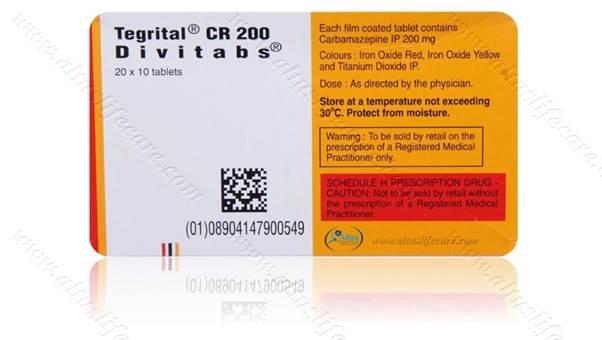
17. Frequently Asked Questions (FAQ)
Q1. How long does it take for Carbamazepine Tablets to start working?
A: Most patients begin to experience therapeutic effects within a few days, though full effects may take 1–2 weeks.
Q2. Can Carbamazepine Tablets be used with other seizure medications?
A: Yes, but interactions are common. Dose adjustments and close monitoring are essential.
Q3. Is Carbamazepine Tablets addictive?
A: No. It is not habit-forming and does not lead to physical dependence.
Q4. Can I drink alcohol while taking Carbamazepine Tablets?
A: It's best to avoid alcohol as it can increase side effects like dizziness or drowsiness.
Q5. Can pregnant women take Carbamazepine Tablets?
A: It's generally avoided in pregnancy unless the benefits outweigh the risks. Always consult your doctor.
Q6. Does Carbamazepine Tablets cause weight gain?
A: Weight changes are uncommon but can occur. Maintaining a healthy diet helps manage this.
Q7. What happens if I miss a dose?
A: Take it as soon as you remember. If it’s almost time for the next dose, skip the missed dose—never double up.
Q8. Is Carbamazepine Tablets suitable for long-term use?
A: Yes, with regular monitoring, it can be used safely for years.
Buy Online from: Carbamazepine Tablets - Altus Lifecare Pvt Ltd
Tegrital CR 200 Tablets | Carbamazepine 200mg - Altus Lifecare Pvt Ltd
Tegrital CR 300 Tablets | Carbamazepine 300mg - Altus Lifecare Pvt Ltd
Tegrital CR 400 Tablets | Carbamazepine 400mg - Altus Lifecare Pvt Ltd
Zeptol CR 200 Tablet | Carbamazepine 200 mg - Altus Lifecare Pvt Ltd
Zeptol CR 300 Tablet | Carbamazepine 300mg - Altus Lifecare Pvt Ltd
Zeptol CR 400 Tablet (Carbamazepine 400mg) - Altus Lifecare Pvt Ltd
- Art
- Causes
- Crafts
- Dance
- Drinks
- Film
- Fitness
- Food
- Παιχνίδια
- Gardening
- Health
- Κεντρική Σελίδα
- Literature
- Music
- Networking
- άλλο
- Party
- Religion
- Shopping
- Sports
- Theater
- Wellness
